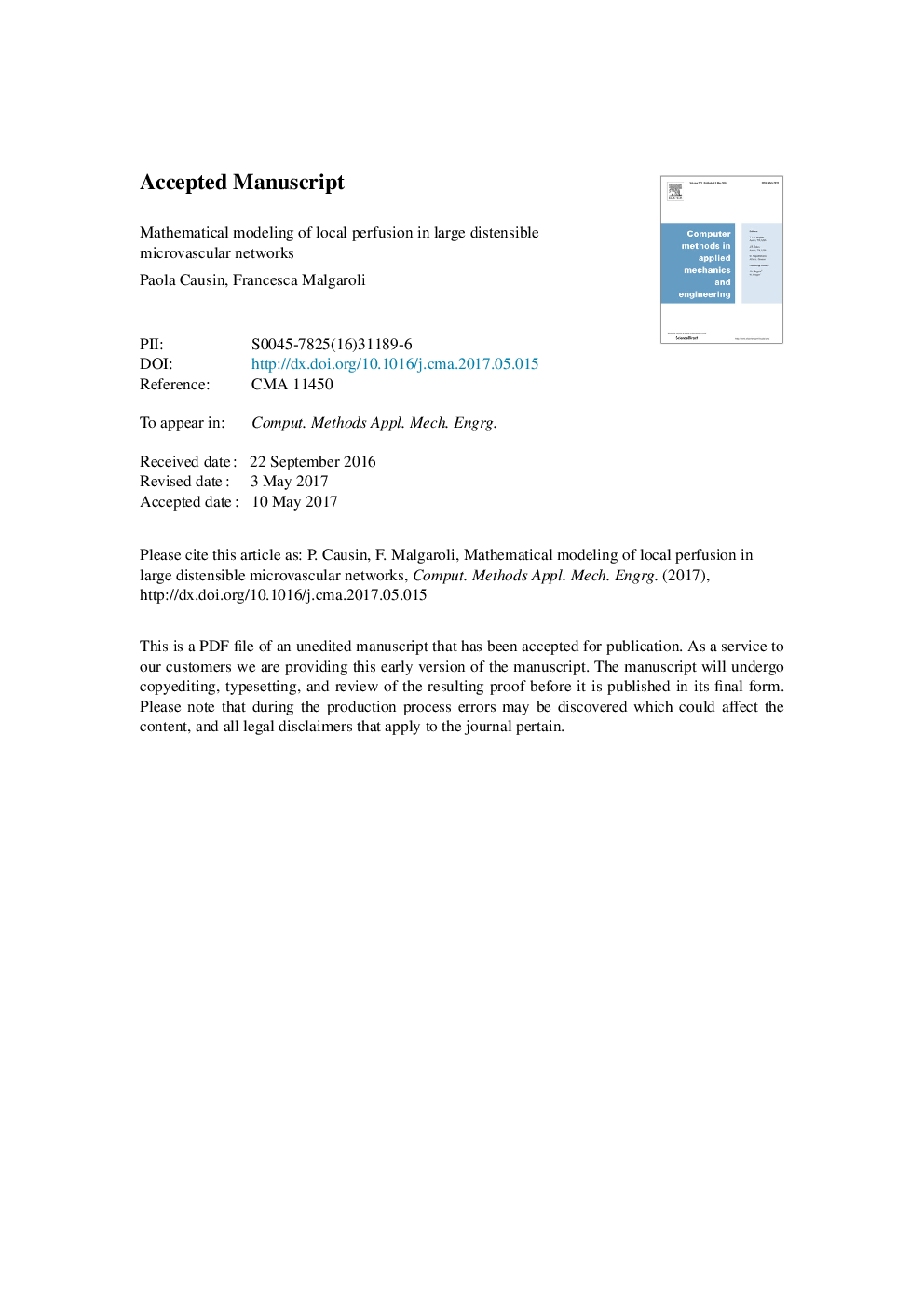| کد مقاله | کد نشریه | سال انتشار | مقاله انگلیسی | نسخه تمام متن |
|---|---|---|---|---|
| 4963862 | 1447412 | 2017 | 70 صفحه PDF | دانلود رایگان |
عنوان انگلیسی مقاله ISI
Mathematical modeling of local perfusion in large distensible microvascular networks
ترجمه فارسی عنوان
مدل سازی ریاضی پرفیوژن محلی در شبکه های بزرگ شبکه ای کوچک
دانلود مقاله + سفارش ترجمه
دانلود مقاله ISI انگلیسی
رایگان برای ایرانیان
کلمات کلیدی
جریان خون منطقه ای، خم شدن قوطی، مقاومت عروقی، میکروسیرکتومی شبکیه، شبکه خون قابل انعطاف، مدل ریاضی،
موضوعات مرتبط
مهندسی و علوم پایه
مهندسی کامپیوتر
نرم افزارهای علوم کامپیوتر
چکیده انگلیسی
Microvessels - blood vessels with diameter less than 200μm - form large intricate networks, functionally organized into arterioles, capillaries and venules. In these networks, the distribution of flow and pressure drop stems in a complex manner from single vessel behavior and mutual vessel interactions. In this paper, we propose a mathematical and computational model to study the behavior of large networks of compliant microvessels. The network geometry is simplified for computational purposes. The arteriolar and venular trees are represented by graphs of straight cylinders, each one corresponding to a vessel. The two trees are connected through a capillary bed. The blood flow and pressure drop across each vessel are related via a simplified fluid-structure interaction (FSI) model, represented by a generalized Ohm's law featuring a conductivity parameter. The conductivity is a function of the vessel cross section area (shape and area), which, in turn, undergoes deformations due to luminal and external pressure loads. The membrane theory is used for the description of the deformation of vessel lumina, adapted to consider thick-walled arterioles and thin-walled venules. An original point of the present work is represented by the inclusion of a buckling model in the FSI problem for venules. As a matter of fact, venules can experience negative values of transmural pressure (difference between luminal and interstitial pressure) and may assume a deformed and even collapsed configuration due to their minimal cross-sectional bending stiffness. The complete model including flow in distensible arterioles, capillaries and venules represents a nonlinear coupled system of PDEs, which is approached numerically by finite element discretization and linearization techniques. As an example of application, we use the model to simulate flow in the microcirculation of the human eye retina, a terminal system with a single inlet and outlet. After a phase of validation against experimental measurements of the correctness of the blood flow and pressure fields in the network, we compute the network response to different conditions. Significant redistributions of the blood flow in the network are observed, highlighting the importance of considering the single vessel behavior along with its position and connectivity in the network.
ناشر
Database: Elsevier - ScienceDirect (ساینس دایرکت)
Journal: Computer Methods in Applied Mechanics and Engineering - Volume 323, 15 August 2017, Pages 303-329
Journal: Computer Methods in Applied Mechanics and Engineering - Volume 323, 15 August 2017, Pages 303-329
نویسندگان
Paola Causin, Francesca Malgaroli,
